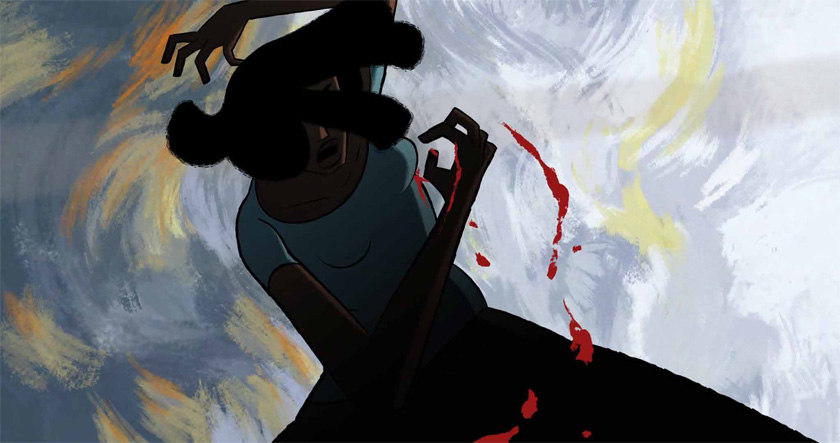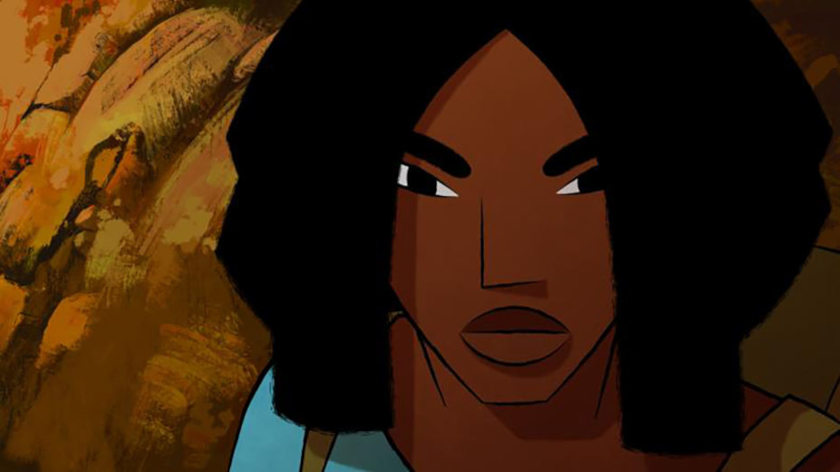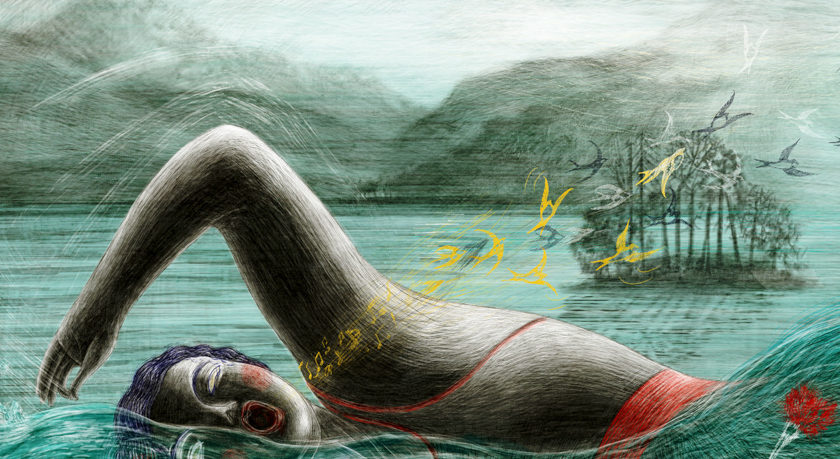‘Nayola’ Film Review: When the Animation Is More That the Art of Movement

A woman dreams of a man who runs but is shot and dies. Nayola runs through the undergrowth, with the sounds of intense gunfire but intermittent. Suddenly, a woman is hit by one of the shots and falls beside Nayola, dropping a box of landmines. The protagonist changes her clothes with the dead woman's clothes, takes the box of landmines, and runs to join the Angola War. Not to kill or fight for an ideal, but to find the man she loves, the father of her daughter.
This is how 'Nayola' begins, the feature film by Portuguese animation filmmaker José Miguel Ribeiro, who, after more than five years of production, and many trips back and forth to Angola, premiered this week at the Annecy Festival.
As a cinematographic work, the film is vibrant, and I will stick to what most aroused my interest (Check also the director's 2019 interview, to understand the film development up to its release).
Angola. Three generations of women were plagued by the civil war, Lelena (the grandmother), Nayola (the daughter), and Yara (the granddaughter). The past and the present interweave. Nayola goes in search of her husband who disappeared during the war. Decades later, the country is finally at peace, but Nayola hasn't returned. Yara has become a rebellious teenager and a subversive rap singer - Synopsis
'Nayola' is a profound film that goes beyond the adaptation of a play ('A Caixa Preta' by José Eduardo Agualusa and Mia Couto), or a simple novel. It is a deep, dense film full of symbols in a mixture of cultures, rhythms, and stories of Angola. Angola is a former colony of Portugal, which had to go to war for its independence and then suffered a civil revolt as part of the Cold War clash. Within this context, José Miguel Ribeira's film talks about three generations of women - grandmother, mother, and daughter - who live in these wars and their consequences.
Narratively, the film manages to "hold" the audience's attention from start to finish. There is no chronological order but a story that is being built by the spectator little by little. There are four levels of information: past (Nayola in the war), present (grandmother and granddaughter who is a rapper, and denounces the lack of better conditions of life of the people, and is persecuted for it), the oneiric (the dreams and thoughts of Nayola) and the magical level (where the reality of history mixes with the beliefs and mysteries of an ancestral culture).
The narrative's temporal and emotional changes are represented chromatically and graphically. Nayola's memories are minimalist sequences, with loose strokes over colored patches of pure sensuality and emotionality based on the illustrations by Portuguese artist Susana Monteiro. While the war narrative predominates warm colors and the poor area that Yara lives in, it is in 3D, with 2D visuals, in which poverty can be recognized anywhere in the world.
And despite these technical differences and narrative moments, the film does not lose its graphic unity, which was one of this production's challenges. As José Miguel explains: "Stop motion, the technique I'm most comfortable with would require my presence on the set, which is a co-production like ours would not be possible. In addition, the 2D-looking 3D allowed me to control the micro-movements necessary for the reveal at grandma's house."
I believe that one of the strengths of this story is that it managed to detach itself from the story that inspired it but developed as a work of its own. According to the director, this was the most difficult: "I'm not a woman, I'm not Angolan, and that was a 5-year job. I had to provide myself with information, and research in Angola and in books like 'Combater Duas Vezes' (Fight Twice) by Margarida Paredes (narrative of women who fought in Angola's war), in addition to working with Angolan artists". In this research, he also found the importance of the rapper movement in Angola and the young rapper Medusa, who gave voice and was the inspiration for the character Iara. It brings "real" consistency to this story, so full of nuances and dimensions - a point of view shared with the director, the "human dimension" of Angola, which the Angolan artists brought to the film.
Symbolic aspects of the actions and graphic elements are instruments of information used throughout the narrative. The scene in which Nayola breaks the frame of Portuguese tiles, when the Red Cross's nurse picks up the orphaned child, or when the jackal walks alongside Nayola, are examples of visual codes that add other layers to the story, creating expectations for the audience.
The dimension of the importance of José Miguel's film goes beyond the artistic issue of very well-done animation production. Animation comes as its synthesizing power, bringing together the different aspects of the Angolan conflict, rescuing the suffering and strength of the many women who suffered and fought in the war. And the director manages to do this rescue in a respectful, dignified, and coherent way to the culture and magic of the country that gave birth to 'Nayola': Angola.
CREDITS:
Nayola, 2022 | Director: José Miguel Ribeiro
Screenplay: Virgílio Almeida, based on the play “A Caixa Preta” by José Eduardo Agualusa and Mia Couto | Main Voices: Elisângela Kadina Rita (Nayola), Catarina André (Soldier Woman), Marinela Furtado Veloso (Masked), Feliciana Délcia Guia – stage name Meduza (Yara), Vitória Adelino Dias Soares (Lelena) | Producers: Ana Carina Estróia, Geert Van Goethen, Linda Sterckx, Camille Annie Cathebras, Jean-François Bigot, Arnoud Rijken and Michiel Snijders, Serge Kestemont, Tomás Oom Martins | Production: Praça Filmes, S.O.I.L, JPL Films, il Luster, Luna Blue Films | Executive Producer: Jorge Antonio | Production Coordinator: Filipa Burmester | Assistant Director: Catarina Calvinho Gil | Post-Production Director: João Champlon

Nayola had its premiere at Annecy Festival 2022, France.
contributed by: Eliane Gordeeff
SIGN UP: Want to read more free articles like this? Sign up for Our Newsletter








